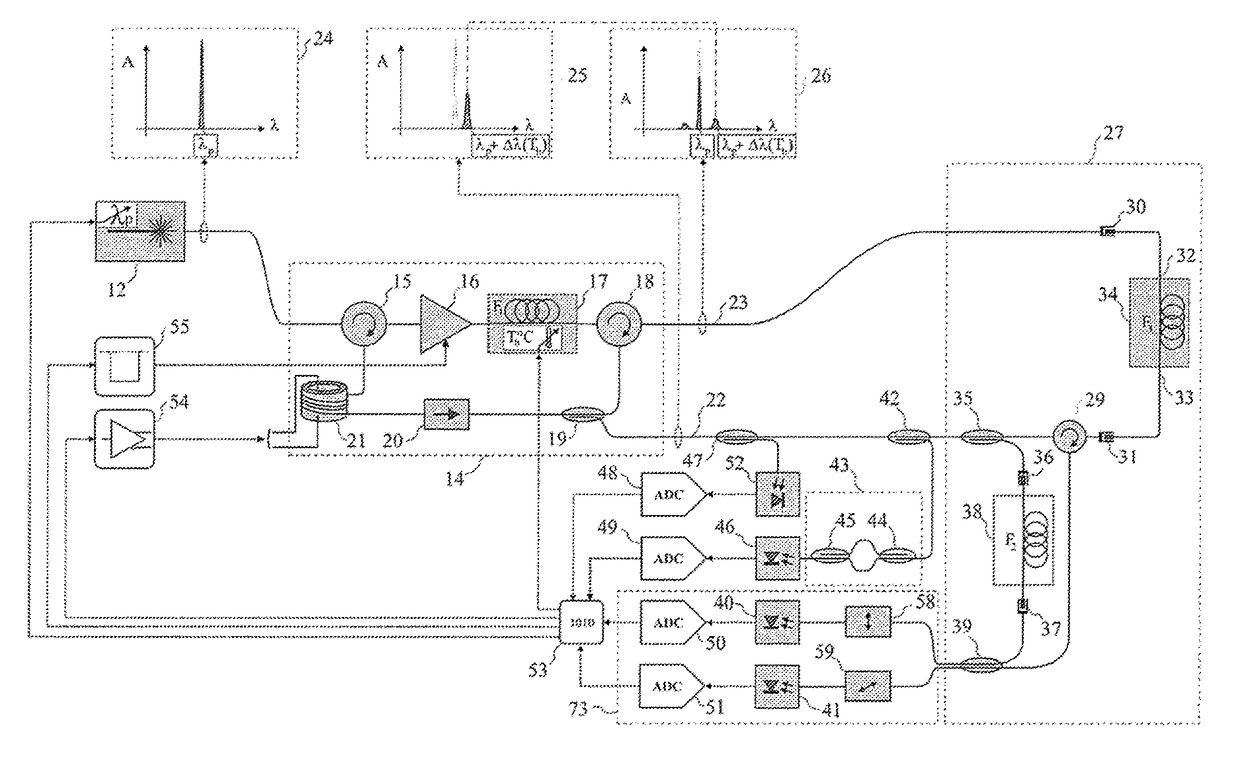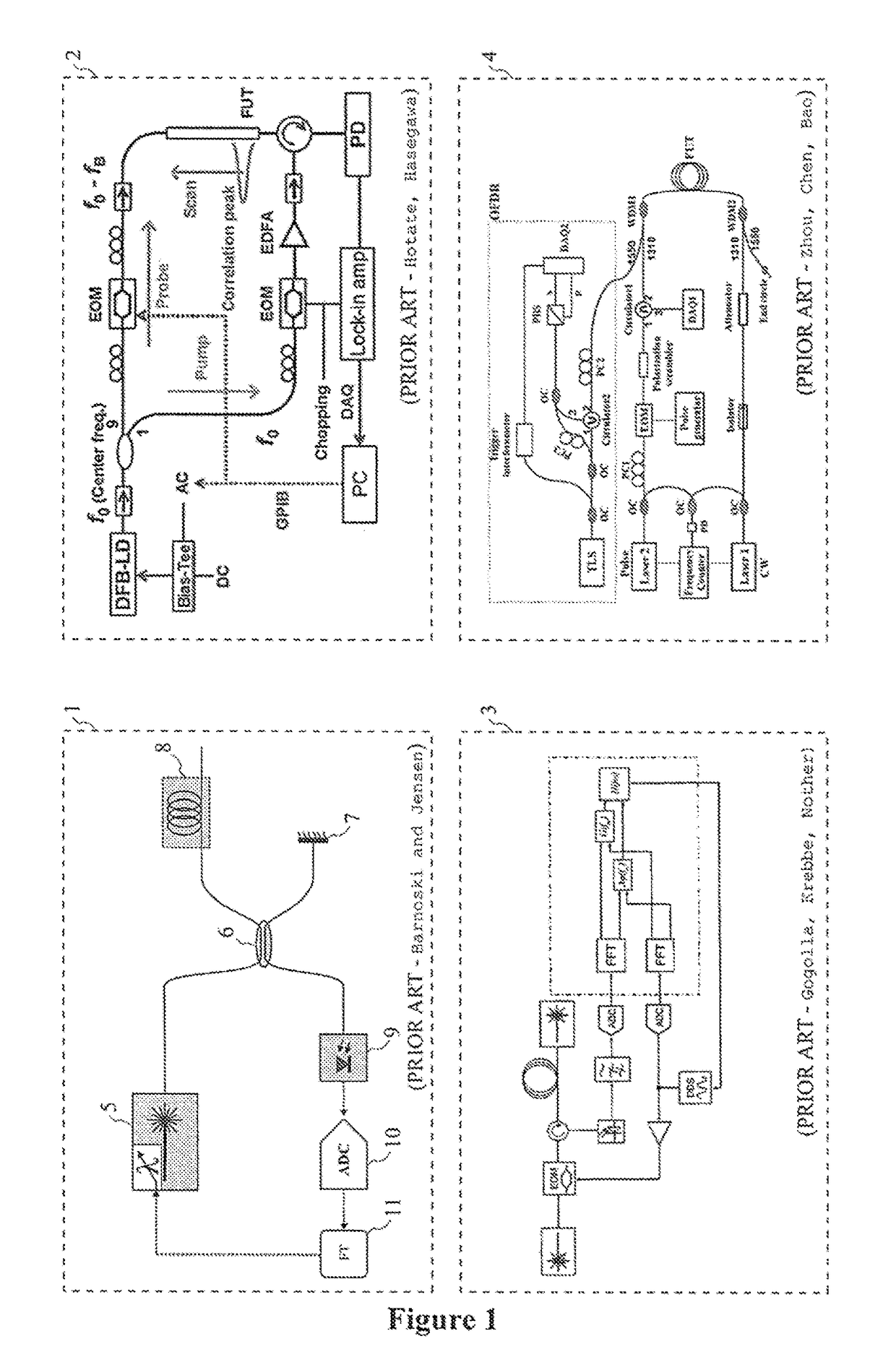Apparatus for interrogating distributed optical fibre sensors using a stimulated brillouin scattering optical frequency-domain interferometer
a technology of optical frequency domain and optical instrument, which is applied in the direction of instruments, converting sensor output, lasers, etc., to achieve the effect of convenient tuning, cost saving and space saving
- Summary
- Abstract
- Description
- Claims
- Application Information
AI Technical Summary
Benefits of technology
Problems solved by technology
Method used
Image
Examples
Embodiment Construction
[0091]A full and enabling disclosure of the present invention, including the best mode thereof, directed to one of ordinary skill in the art, is set forth in the specifications, which makes reference to the appended figures, in which:
[0092]The FIG. 2 discloses a partial schematic representation, non-limiting, of an embodiment of an apparatus according to the present invention in which the sensing fibre (34) is connected in a transmission-type configuration.
[0093]The apparatus comprises a primary laser (12) that sources a monochromatic light of wavelength λP, sweepable and having a spectrum as illustrated in the frame (24), with linewidth smaller that the Brillouin gain bandwidth in the sensing fibre (that is suitable to perform as stimulated Brillouin pump or probe).
[0094]The said light seeds a Brillouin ring laser optical circuit (14) by means of a circulator (15) and, after having been amplified by an optical gain block (16), preferentially bi-directional, is injected in a Brillou...
PUM
| Property | Measurement | Unit |
|---|---|---|
| distance distribution | aaaaa | aaaaa |
| distance distribution | aaaaa | aaaaa |
| distance | aaaaa | aaaaa |
Abstract
Description
Claims
Application Information
 Login to View More
Login to View More - R&D
- Intellectual Property
- Life Sciences
- Materials
- Tech Scout
- Unparalleled Data Quality
- Higher Quality Content
- 60% Fewer Hallucinations
Browse by: Latest US Patents, China's latest patents, Technical Efficacy Thesaurus, Application Domain, Technology Topic, Popular Technical Reports.
© 2025 PatSnap. All rights reserved.Legal|Privacy policy|Modern Slavery Act Transparency Statement|Sitemap|About US| Contact US: help@patsnap.com



